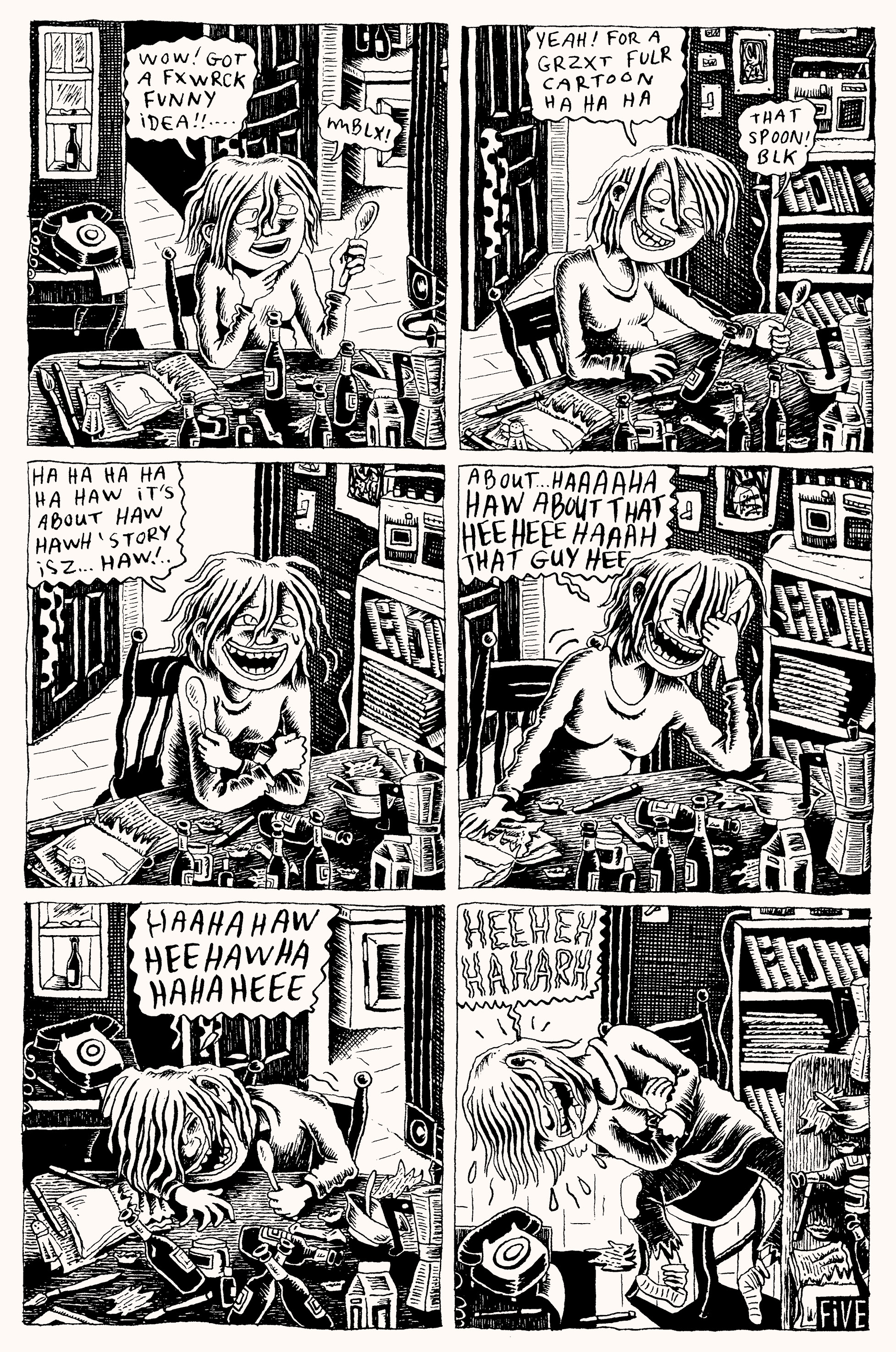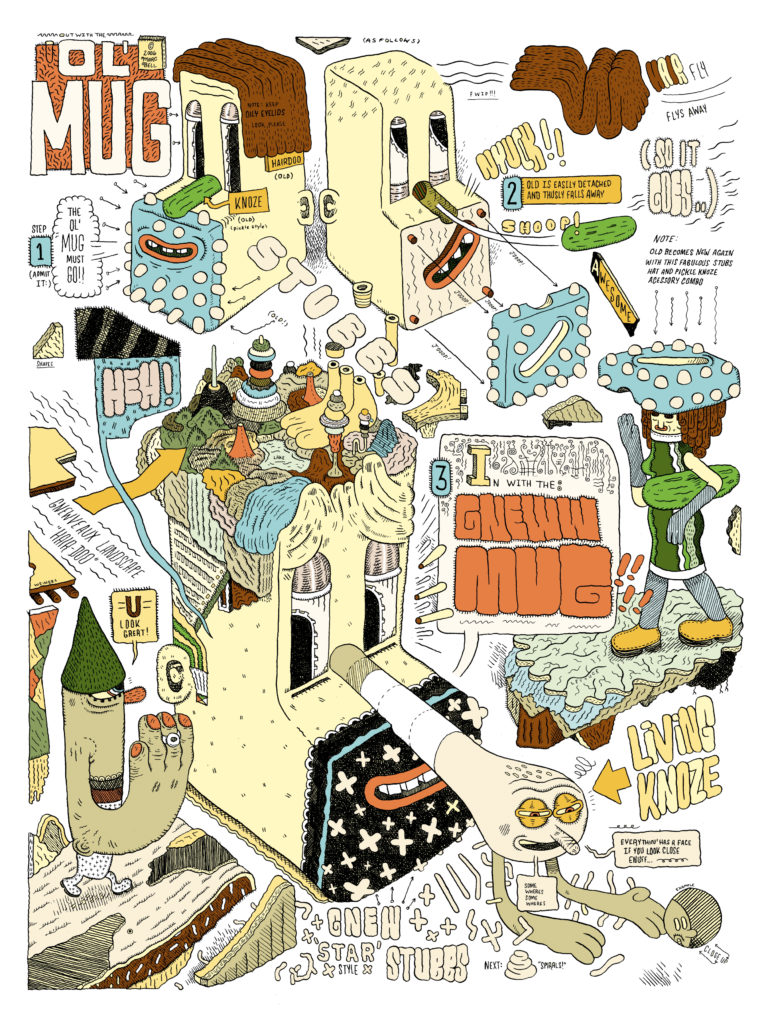
This Thursday, June 20th, the Art Gallery of Hamilton’s launches perhaps Canada’s most complete cartooning exhibition ever, THIS IS SERIOUS: Canadian Indie Comics. Spanning across the majority of the AGH’s temporary gallery space, the exhibition surveys the work of 47 Canadian artists working in the expansive genre of cartooning and indie comics.
In the midst of the crunch-time hustle before the show opens, co-curators Joe Ollmann and Alana Traficante graciously agreed to sit down and tell us a bit about what to expect and how to think about the unique comics culture in Canada.
Is THIS IS SERIOUS a response to the exclusion of cartoonists from much of the ‘high-brow’ art world in Canada?
Joe: I’m a cartoonist, so for me, I don’t see the distinction. I just love comics and I think that they are amazing literature and art. When I moved here to Hamilton from Montreal, anytime I talked to anyone in a gallery setting who had power, I would say, “You should have a show of comics!” That was my whole thing, I would just annoy everyone. But Alana is a curator in the art world who also is a fan of comics…
“We realized there was this void for a national survey exhibition”
Alana: Yeah, Joe and I had an early conversation at a gallery opening in 2015 where I was like, “Yeah, somebody should do a show about comics!” The Art Spiegelman exhibition had just travelled to Toronto so that was exciting to see. I hadn’t been a huge comics person but I was always a fan of the literary kind of attributes in the genre, so that conversation stuck with me.
We were initially thinking about it as some sort of a locals-specific show — thinking about cartoonists in Hamilton. But the more we thought about it, and the more we started to engage Joe in the conversation, we realized there was this void for a national survey exhibition. Often times, a show passes through a big museum and it might not happen again for 10 or 15 years, so we figured, okay, if we’re gonna do this, we’ve gotta make it national.

How did you go about selecting comics for this collection? How did your interaction with the artists evolve from your initial encounter with their work to the realization of the exhibition?
Alana: We had a couple meetings, one at a diner where Joe just showed up with a bunch of books — that was before we had really engaged Joe in a formal capacity. Then we had another meeting where we just went through pages and made a handwritten list that was really long.
Yeah, how do you narrow it down? That’s so tough.
Joe: That was the trickiest thing — there are people that you want to have on and there’s just not room. We tried to showcase many different practices, that was one of our criteria. [The exhibit] is mostly traditional — a lot of pen to paper, some digital artists now, but we were trying to show as many different approaches as possible.
Alana: We were trying our best to have a broad geographic span too, which is a little bit more challenging because there are certainly pockets—Toronto, Montreal, a community here in Hamilton. We did a lot of book research and list-making, then we went out and did a ton of studio visits. We met with almost all the artists except for the ones who were too far away… [This] gave us a chance to sit down and meet with the artists and find out if they had this opportunity to present their work in the context of a gallery, what would they wanna show?
Joe: That’s the really important thing we realized about modern curation. It’s less about your own vision and more to try and facilitate what the artists want. Some artists had very specific things they wanted to show. Chester Brown, for instance, didn’t want a retrospective even though we had a big space for him. He just wanted to show his current work. Even so, he was really generous because he allowed us to show some of his rough work.
It’s nice that you were able to get that personal element — going into their spaces and getting to know them. I don’t know how you can properly represent someone any other way.
Alana: Being a contemporary curator, it’s important to have that respectful, trusting relationship with the artist you’re working with, so that you can advocate for how they want to see their work represented.
Joe: I’m a big fan of people, and I mean, I know a lot of these people. I’ve known Jillian Tamaki for a million years, but I’m in awe of her work and of her, and so going into her studio and looking at her originals was just incredible. Everyone was just so generous with their time.
Alana: Yeah, the gallery has been really good about letting us take some risks with the show. There are 47 artists in the exhibition, and that’s a lot for the logistical side of things. There’s lots of hands on deck in terms of the team here.

“People are used to seeing comics in print,
and don’t know about all that goes behind it.”
A lot of work is being done these days when it comes to recognizing and supporting indie comics creators in the GTA—between the new Canadian Comics library, the cartoonist database, and the work you folks are doing here at the AGH, we’d say we’re taking steps in the right direction. Still, we’re wondering—what’s next?
Alana: This is a big survey exhibition taking a broad cross-section of all of the different activities that happen in indie comics, but I would be interested in seeing curators looking more specifically at in-depth, specific artists’ work, or thematically-based group shows. Also, [shows] collapsing this barrier between comic arts and fine arts, or not necessarily trying to reposition the way we think about comics through a fine arts lens, but just rather understanding comics as a really rich, mature art form in and of itself. I think that’s sort of the theoretical side of what an exhibition like this has the capacity to do.
Joe: That’s what I thought as I was visiting people’s studios, and just seeing their other work. Like Seth, for example, he does these elaborate papercuts. You could do a whole exhibit of just that — he had hundreds and hundreds of them in a book, like, that’s just what he does at night. The thing that always dazzles me is that I know they’re meant to be books; they’re meant to be read. But the original art as objects are just so beautiful. It’s cliché, but when you’re staring at them and you see the flaws, the whiteout or whatever, that’s when you know it’s human. It’s not [made by] a machine, and I think that’s what really dazzles people — like, how do they do this? There’s a level of craft to it that is incredible.
Alana: We have a couple of moments in the exhibition where we try to pull back the curtain a little bit in terms of revealing that other side — the pencil rough, the colour separation to the finished page — to just kind of connect the dots a little. People are used to seeing comics in print, and don’t know about all that goes behind it. I didn’t know either, until we started visiting artists in their studios and seeing the level of complexity that goes into creating books. That will be a fun moment.
This interview has been edited and condensed for clarity.

Come out and celebrate the launch of the AGH‘s summer season exhibitions, including THIS IS SERIOUS: Canadian Indie Comics on June 20th! Special exhibition admission is free from 4-10pm.
